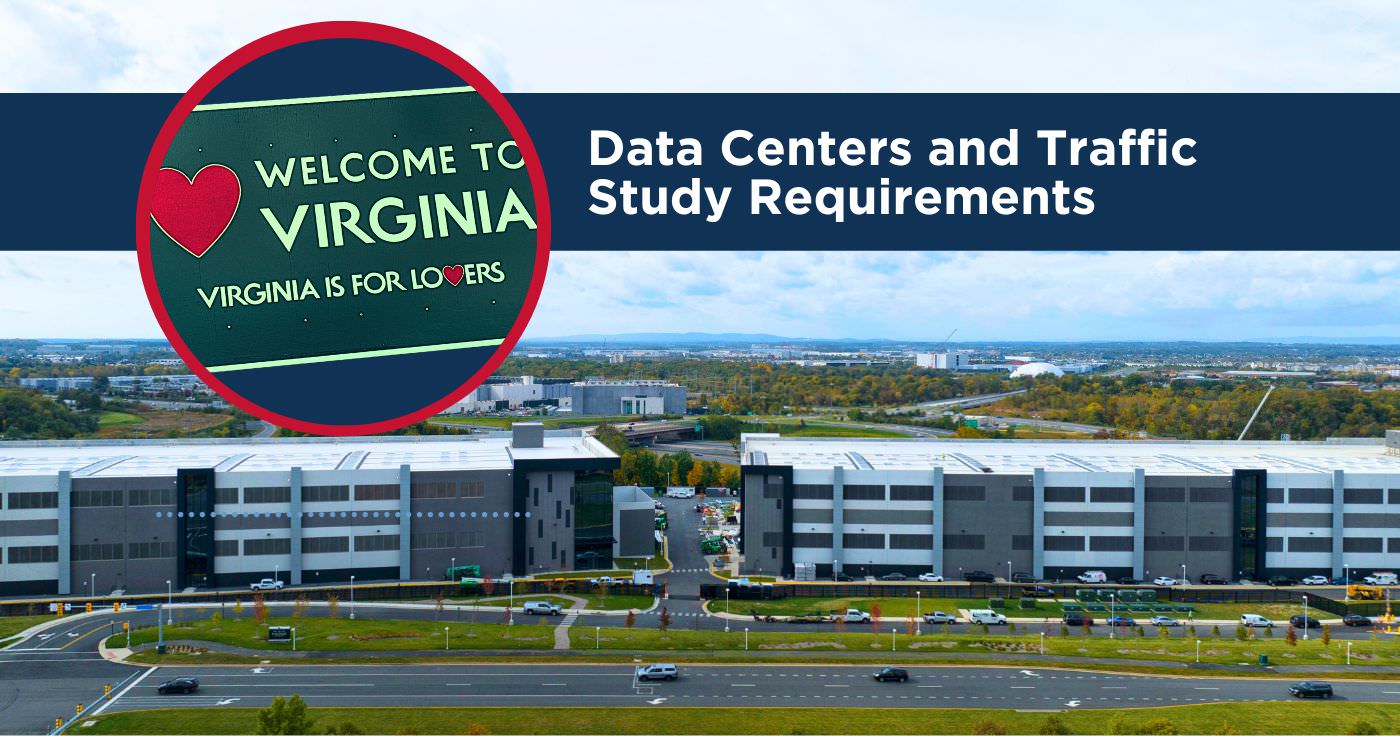The assumption is easy to make: data centers don’t always create lots of traffic. But size does matter, and there are traffic issues involved that require analysis and regulatory approval if you want to get a data center development approved.
Larger Data Centers (Campuses!) Result in More Traffic
While data centers don’t necessarily produce the traffic that other developments of the same size produce, as our friends at Bohler Engineering stated in this blog, the question of traffic volume also depends on the size of the data center development.
The fact is that data center campuses consisting of multiple buildings approaching and exceeding a million square feet (SF) or gross floor area (GFA) begin to generate enough traffic to require significant traffic analyses. With internet and AI use on the rise, data centers are increasingly critical infrastructure and the demand for more development is expected to get larger. Mordor Intelligence states that the data center market in the United States is expected to grow from USD 18.10 billion in 2023 to USD 28.46 billion by 2028.
Other Data Center Traffic Issues: Site Access and Regulatory Approvals
No matter the amount of traffic, data center campuses have access points to the public roadway network that require analysis for development to receive approval. Site access studies typically analyze:
- Evaluation of site access (intersection spacing, turn lane requirements, etc.)
- Security gate operations (queueing, rejection lanes, delivery routing, etc.)
- Internal circulation (standard operations, visitor routing, emergency scenarios, etc.)
Aside from these, traffic studies are required (or requested) in some local jurisdictions even no matter the planned data center size.
In Virginia, a VDOT Chapter 870 Traffic Impact Analysis (TIA) is required when a development is estimated to generate daily traffic volumes exceeding 5,000 vehicles per day (VPD), which based on the Institute of Transportation Engineers (ITE) Trip Generation Manual, 11th Edition, equates to approximately 5,000,000 SF of data center GFA.
In Loudoun County, a Traffic Impact Study (or Traffic Impact Statement) is required for legislative land development applications (e.g. zoning map amendments and special exceptions) for data center developments of any size.
In Prince William County, a TIA is required when a development is estimated to generate daily traffic volumes exceeding 1,200 VPD or 100 peak hour trips, which equates to approximately 610,000 SF of data center GFA.
In Fairfax County, a Comprehensive Transportation Analysis (CTA) is required when a development is estimated to generate daily traffic volumes exceeding 2,500 VPD or 250 peak hour trips, which equates to approximately 1,440,000 SF of data center GFA.

